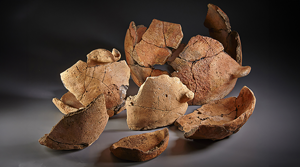No CrossRef data available.
Article contents
The first pottery in the Arabian Gulf: origins, production and distribution
Published online by Cambridge University Press: 10 February 2025
Abstract

The earliest pottery vessels in the Arabian Gulf, appearing in the mid-sixth millennium BC, belong to two distinct traditions: Ubaid Ware was imported from Mesopotamia, but the origins of the Coarse Red Ware have remained obscure. Geochemical examination of pottery from Bahra 1, in modern-day Kuwait, and geological samples from the surrounding area reveal a regional origin for the clay. Further exploration of the Bahra 1 assemblage indicates that Coarse Red Ware was probably made at the site by low-skilled potters. This research provides insights into the organisation of pottery production and distribution in the Arabian Neolithic.
- Type
- Research Article
- Information
- Copyright
- Copyright © The Author(s), 2025. Published by Cambridge University Press on behalf of Antiquity Publications Ltd


